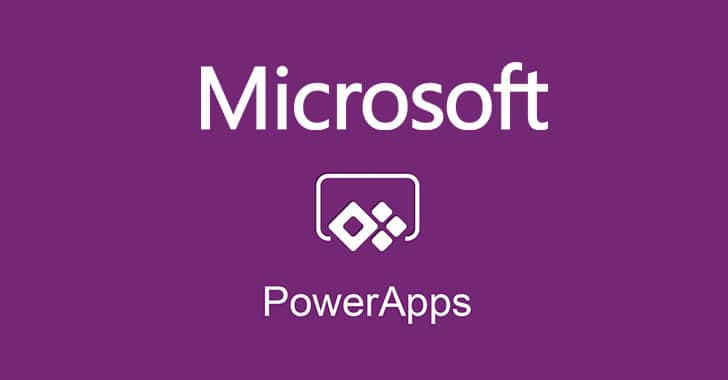10 Ways Microsoft Power Apps Can Revolutionise Your Business Efficiency

1. Introduction
In today’s fast-paced business environment, efficiency is key to staying ahead of the competition. One powerful tool that can revolutionise your business efficiency is Microsoft Power Apps. This innovative platform allows users to create custom business apps without the need for extensive coding knowledge. With its user-friendly interface and integration capabilities, Microsoft Power Apps can streamline processes, automate tasks, and improve productivity. In this blog post, we will explore 10 ways in which Microsoft Power Apps can transform your business and help you achieve new levels of efficiency.
Here is a quick Beginner’s guide on how to get started with Power Apps.
2. Understanding the power of Microsoft Power Apps
Microsoft Power Apps is a versatile and powerful tool that can revolutionise the way businesses operate and improve overall efficiency. Understanding the capabilities of Microsoft Power Apps is crucial in harnessing its full potential for your organisation.
1. No coding required: One of the key features of Microsoft Power Apps is its ability to create custom business apps without the need for extensive coding knowledge. This means that even users with limited technical expertise can create sophisticated apps to meet their specific business needs.
2. User-friendly interface: Microsoft Power Apps provides a user-friendly interface that enables users to easily design and customise their apps. The drag-and-drop functionality allows for intuitive app creation and customisation, making it accessible for users of all levels.
3. Integration capabilities: Microsoft Power Apps seamlessly integrates with other Microsoft products, such as SharePoint, Teams, and Dynamics 365. This integration enables businesses to leverage their existing systems and data, improving efficiency by eliminating the need for duplicate data entry and ensuring data accuracy.
4. Automation of repetitive tasks: Microsoft Power Apps allows for the automation of repetitive tasks, reducing the time and effort required for manual processes. By automating tasks such as data entry, notification alerts, and workflow approvals, businesses can streamline their operations and improve productivity.
5. Mobile accessibility: With the increasing reliance on mobile devices, Microsoft Power Apps provides the flexibility of accessing and using business apps on the go. Users can access their custom apps through mobile devices, ensuring that employees have real-time access to information and can stay productive from anywhere.
6. Data-driven decision-making: Microsoft Power Apps enables businesses to gather and analyse data from various sources, providing valuable insights for informed decision-making. By creating apps that capture and consolidate data, businesses can gain a deeper understanding of their operations and identify areas for improvement.
7. Collaboration and teamwork: Microsoft Power Apps promotes collaboration and teamwork by allowing multiple users to work on the same app simultaneously. This functionality enables teams to collaborate on app development, share ideas, and contribute to the overall efficiency of the business.
8. Scalability and flexibility: Microsoft Power Apps offers scalability and flexibility to accommodate the changing needs of businesses. As organisations grow and evolve, Power Apps can easily adapt to new requirements, allowing for the continuous improvement of business processes.
9. Cost-effective solution: Microsoft Power Apps provides a cost-effective solution for businesses, eliminating the need for expensive custom development or the procurement of multiple application licenses. With Power Apps, businesses can create and deploy custom apps quickly and at a fraction of the cost.
10. Community support and resources: Microsoft Power Apps has a thriving community of users and developers who share their knowledge and expertise. This community support provides valuable resources, tips, and best practices to help businesses make the most of Microsoft Power Apps.
In summary, Microsoft Power Apps is a powerful tool that can transform business efficiency by enabling the creation of custom apps, automating tasks, integrating with existing systems, and providing valuable insights for data-driven decision-making. By harnessing the power of Microsoft Power Apps, businesses can streamline their operations, improve productivity, and stay ahead of the competition in today’s fast-paced business environment.

https://unsplash.com/@fantasyflip
3. Streamlining business processes with Power Apps
Microsoft Power Apps offers a wide range of features and functionalities that can streamline business processes and improve overall efficiency. By leveraging Power Apps, organisations can automate manual tasks, integrate systems, and enhance collaboration among teams. Here are three key ways Power Apps can revolutionise your business efficiency:
1. Automation of repetitive tasks: Power Apps allows businesses to automate repetitive tasks, reducing the time and effort required for manual processes. With Power Apps, you can create custom workflows that automate data entry, notification alerts, and workflow approvals. This automation eliminates the need for manual intervention and ensures timely and accurate execution of tasks, leading to increased productivity and efficiency.
2. Integration with existing systems: Power Apps seamlessly integrates with other Microsoft products, such as SharePoint, Teams, and Dynamics 365. This integration enables businesses to leverage their existing systems and data, eliminating the need for duplicate data entry and ensuring data accuracy. By integrating Power Apps with your existing systems, you can create a unified platform that centralises data and streamlines business processes, resulting in enhanced efficiency and productivity.
3. Enhanced collaboration and teamwork: Power Apps promotes collaboration and teamwork by allowing multiple users to work on the same app simultaneously. Teams can collaborate on app development, share ideas, and contribute to the overall efficiency of the business. Power Apps provides a user-friendly interface that enables teams to easily design and customise apps, fostering collaboration and enabling teams to work together towards common goals.
By streamlining business processes with Power Apps, organisations can achieve significant improvements in efficiency and productivity. The automation of repetitive tasks, integration with existing systems, and enhanced collaboration capabilities empower businesses to optimise their operations, reduce manual errors, and make data-driven decisions. With Power Apps, organisations can stay ahead in today’s competitive business landscape by streamlining processes and maximising efficiency.

https://unsplash.com/@fuerte
4. Enhancing communication and collaboration
Effective communication and collaboration are vital for the success of any business. With Microsoft Power Apps, organisations can significantly enhance their communication and collaboration capabilities, revolutionising their business efficiency.
Here are four key ways Power Apps can enhance communication and collaboration:
1. Real-time communication: Power Apps provides built-in communication features that allow teams to communicate in real-time. Users can chat, make audio or video calls, and share files directly within the app. This eliminates the need for switching between different communication tools, streamlining the communication process and ensuring that team members can easily connect and collaborate.
2. Centralised information sharing: Power Apps enables organisations to centralise information and make it easily accessible to team members. By creating custom apps, businesses can create a centralised platform where employees can access and share important documents, data, and information. This eliminates the need for multiple emails, phone calls, or physical meetings to share information, saving time and increasing efficiency.
3. Collaborative workspaces: Power Apps allows teams to create collaborative workspaces where they can work together on projects, tasks, and documents. Users can create shared workspaces, assign tasks, track progress, and collaborate on documents in real-time. This promotes teamwork, ensures transparency, and enables smoother collaboration across departments and teams.
4. Integration with Microsoft 365 tools: Power Apps seamlessly integrates with Microsoft 365 tools, such as SharePoint, Teams, and Outlook. This integration enables users to leverage the full suite of Microsoft productivity tools within Power Apps, enhancing communication and collaboration. For example, users can access SharePoint libraries directly from Power Apps, collaborate on documents using Microsoft Teams, and sync tasks and calendars with Outlook. This integration creates a unified ecosystem where teams can seamlessly communicate and collaborate using their preferred Microsoft tools.
By leveraging Power Apps to enhance communication and collaboration, businesses can improve their overall efficiency and productivity. Real-time communication, centralised information sharing, collaborative workspaces, and integration with Microsoft 365 tools empower teams to work together effectively, streamline workflows, and make faster, more informed decisions. With Power Apps, organisations can create a culture of collaboration and communication, enabling them to stay ahead in today’s competitive business landscape.

https://unsplash.com/@adigold1
5. Automating repetitive tasks
Automating repetitive tasks is another key way that Microsoft Power Apps can revolutionise business efficiency. Many organisations waste valuable time and resources on manual, repetitive tasks that can easily be automated using Power Apps. Here are five examples of how Power Apps can automate repetitive tasks:
1. Data entry and updates: Power Apps can automate the process of entering and updating data in databases or spreadsheets. Instead of manually inputting information, employees can use Power Apps to create user-friendly forms that capture data and automatically populate the necessary fields. This eliminates errors and saves time by eliminating the need for manual data entry.
2. Report generation: Power Apps can automate the generation of reports by pulling data from multiple sources and generating customised reports based on predefined criteria. This eliminates the need for employees to manually collect and compile data, freeing up their time for more strategic tasks.
3. Approval workflows: Power Apps can streamline and automate the approval process for various business processes. For example, organisations can create Power Apps that route documents or requests to the appropriate stakeholders for review and approval. This eliminates the need for manual follow-ups and ensures that approvals are obtained in a timely manner.
4. Notifications and reminders: Power Apps can automate notifications and reminders for important tasks or deadlines. For example, organisations can create Power Apps that send automated email reminders to employees for upcoming meetings or project milestones. This helps the team stay organised and ensures that tasks are completed on time.
5. Task assignment and tracking: Power Apps can automate the assignment and tracking of tasks within a team or department. Organisations can create Power Apps that assign tasks to team members, track the progress of each task, and send automated updates and notifications. This helps ensure accountability and transparency within the team and eliminates the need for manual task management.
By automating repetitive tasks with Power Apps, organisations can save time, reduce errors, and improve overall efficiency. Employees can focus on more strategic and value-added tasks, while Power Apps handle the mundane and repetitive work. This not only increases productivity but also boosts employee morale and satisfaction. With Power Apps, businesses can streamline their operations and achieve higher levels of efficiency in today’s fast-paced business environment.

